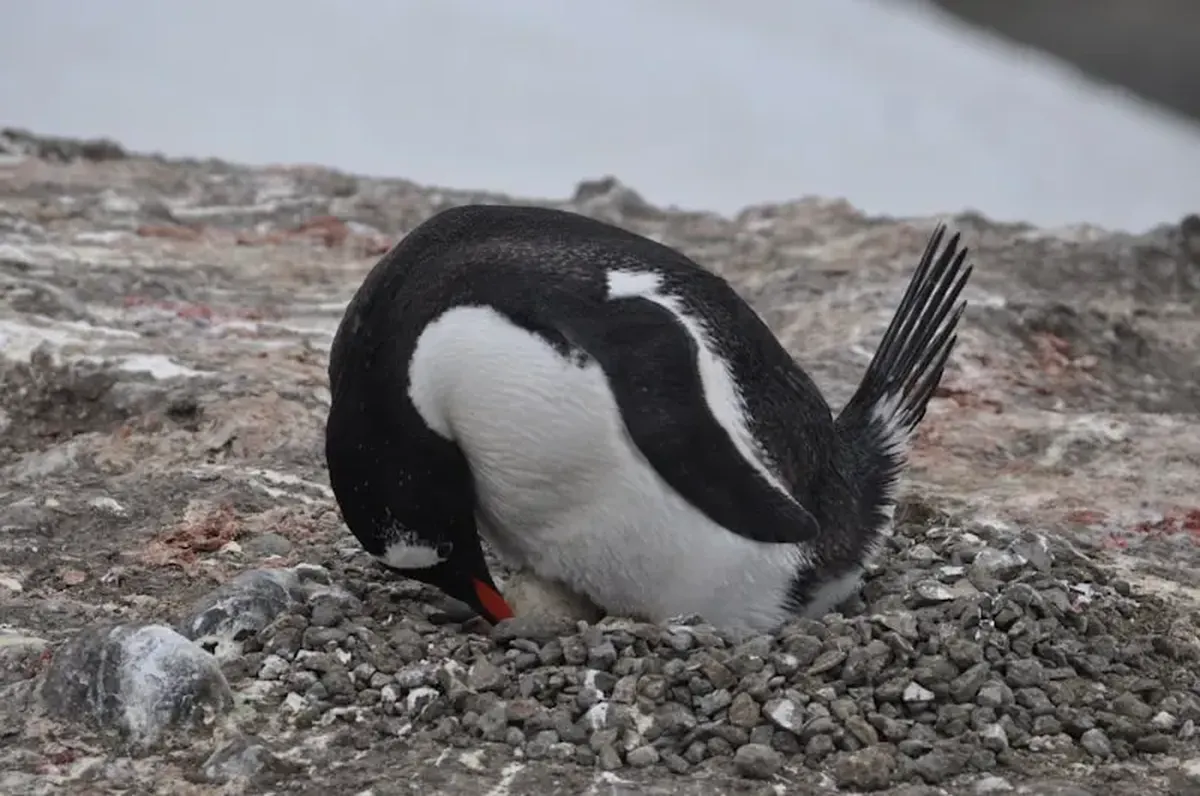Antarctic penguins likely meet their daily sleep needs through short bursts of sleep. In fact, their total time spent in fragmented micro-sleeps adds up to about 11 hours. This adaptive trait allows these birds to continuously guard their future offspring from predators and unfriendly neighbors in their colony. Researchers have repeatedly pointed out that for humans, dozing off for just a few seconds is a clear sign of sleep deprivation, which can be dangerous in many situations, such as driving a car. Fragmented sleep also negatively impacts cognitive functions and can trigger neurodegenerative diseases like Alzheimer’s. However, for the Antarctic penguins of the species Pygoscelis antarcticus, this acquired sleep pattern is a true blessing.
How the Research Was Conducted
A team of international scientists led by Paul-Antoine Libourel from the Lyon Neurobiology Research Center discovered that these flightless birds developed this habit out of necessity to maintain constant vigilance. Among various penguin species, the Pygoscelis antarcticus population is currently the most widespread, numbering around eight million pairs. These birds primarily inhabit the Antarctic Peninsula and the islands in the southern part of the Atlantic Ocean. Typically, during nesting, one penguin watches over the eggs while its partner goes foraging for food. When the forager returns, the roles are switched.
The researchers traveled to King George Island, where 2,700 pairs of Antarctic penguins were nesting. They implanted electrodes in 14 birds to study their sleep patterns. The team recorded brain activity and neck muscle movements, and also used accelerometers and GPS to track the birds’ movements and body positions.
What the Scientists Discovered
Through several days of observation, the team uncovered fascinating aspects of the Antarctic penguins’ sleep patterns, as reported by Science Alert. During the incubation of their eggs, they slept either standing or lying down, with an average sleep duration of 3.91 seconds. Over the course of a day, they accumulated up to 10,000 of these micro-sleeps. Penguins located on the outskirts of the colony experienced longer sleep segments and deeper sleep compared to those situated in the center. This difference can be attributed to the excessive noise that accompanies life in the middle of the colony, as well as increased anxiety due to a higher risk of egg theft from nests.
Interestingly, the scientists did not directly measure whether the birds’ bodies recover during these fragmented sleep periods. However, the fact that the penguins successfully reproduced led researchers to believe that this is indeed the case. The moments of silence among neurons create a necessary window for rest and recovery. “Thus, what is not normal for humans may be perfectly normal for birds or animals, at least under certain conditions,” the scientists concluded.
Previous studies have also identified micro-sleep in albatrosses, dolphins, ducks, and elephant seals. This adaptation helps them rest while on the move.

